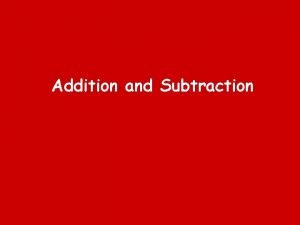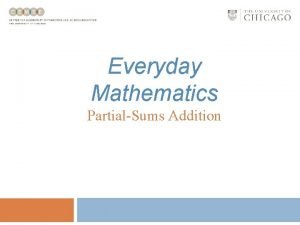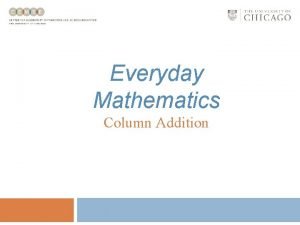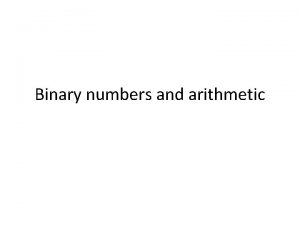Moment Moment In addition to the tendency to












- Slides: 12

Moment

Moment • In addition to the tendency to move a body in the direction of its application, a force can also tend to rotate a body about an axis. • The axis may be any line which neither intersects nor is parallel to the line of action of the force. • M=Fd

Moment about a Point • Point of application of a force and line of action of a force are as in Fig: F • • line of action of a force point of application The magnitude of the moment or tendency of the force to rotate the body about the axis perpendicular to the plane of the body is proportional both to the magnitude of the force and to the moment arm d, which is the perpendicular distance from the axis to the line of action of the force.

Moment: Vector Definition • In some two-dimensional and many of the three-dimensional problems to follow, it is convenient to use a vector approach for moment calculations.

Clockwise and Counterclockwise moments: • If tendency of the force is to rotate its moment arm in a counter clockwise manner it is called counterclockwise moment (CCW). We will assume CCW moment as a positive moment (+). • If tendency of the force is to rotate its moment arm in a clockwise manner it is called clockwise moment (CW). We will assume CW moment as a negative moment (-).

Zero moments - If line of action of the force intersects the axis of rotation, there is no moment of the force about this axis of rotation - If line of action of the force is parallel to the axis of rotation, there is no moment of the force about this axis of rotation

Varignon’s Theorem • The moment of a force about any point is equal to the sum of the moments of the components of the force about the same point.

Problems For the figure shown below, find moment of 400 N force about point A using: 1. Scalar approach y 2. vector approach. 3 m O 45 x 0 400 N 6 m A

Scalar Approach 3 m y O 45 x 0 400 N 6 m A

Vector Approach (-3, 0) 3 m y O x 450 400 N 6 m (0, -6) A


Alternative Solution (Using Varignon’s Theorem): Assuming that the counterclockwise moment is positive; MB = - Fx. (0. 16 m) - Fy. (0. 2 m) where Fx= 400 N and Fy= 693 N MB = -400 N(0. 16 m)-693 N(0. 2 m) = -202. 6 N. m We can say MB = -203 N. m Since we assumed that the counterclockwise moment is positive and we obtained a negative moment value, this implies that the direction of MB is actually clockwise. So; the result is exactly the same as before, i. e.
 The parallel axis theorem for an area is applied between
The parallel axis theorem for an area is applied between Find the moment
Find the moment Cách giải mật thư tọa độ
Cách giải mật thư tọa độ Lời thề hippocrates
Lời thề hippocrates Vẽ hình chiếu đứng bằng cạnh của vật thể
Vẽ hình chiếu đứng bằng cạnh của vật thể Glasgow thang điểm
Glasgow thang điểm Quá trình desamine hóa có thể tạo ra
Quá trình desamine hóa có thể tạo ra Khi nào hổ mẹ dạy hổ con săn mồi
Khi nào hổ mẹ dạy hổ con săn mồi Các châu lục và đại dương trên thế giới
Các châu lục và đại dương trên thế giới Dot
Dot Nguyên nhân của sự mỏi cơ sinh 8
Nguyên nhân của sự mỏi cơ sinh 8 Bổ thể
Bổ thể Phản ứng thế ankan
Phản ứng thế ankan






















